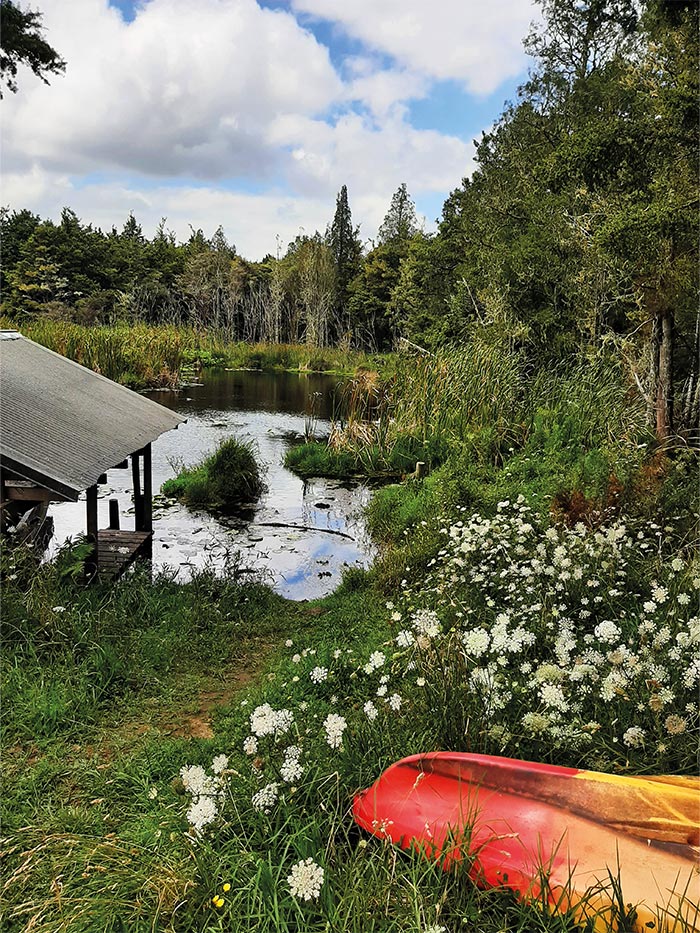heatherwhelanwriting
Saturday, 9 August 2025
New Book - Gold Dreams
Tuesday, 18 June 2024
Timepiece
Wednesday, 29 May 2024
Ngatea Water Gardens
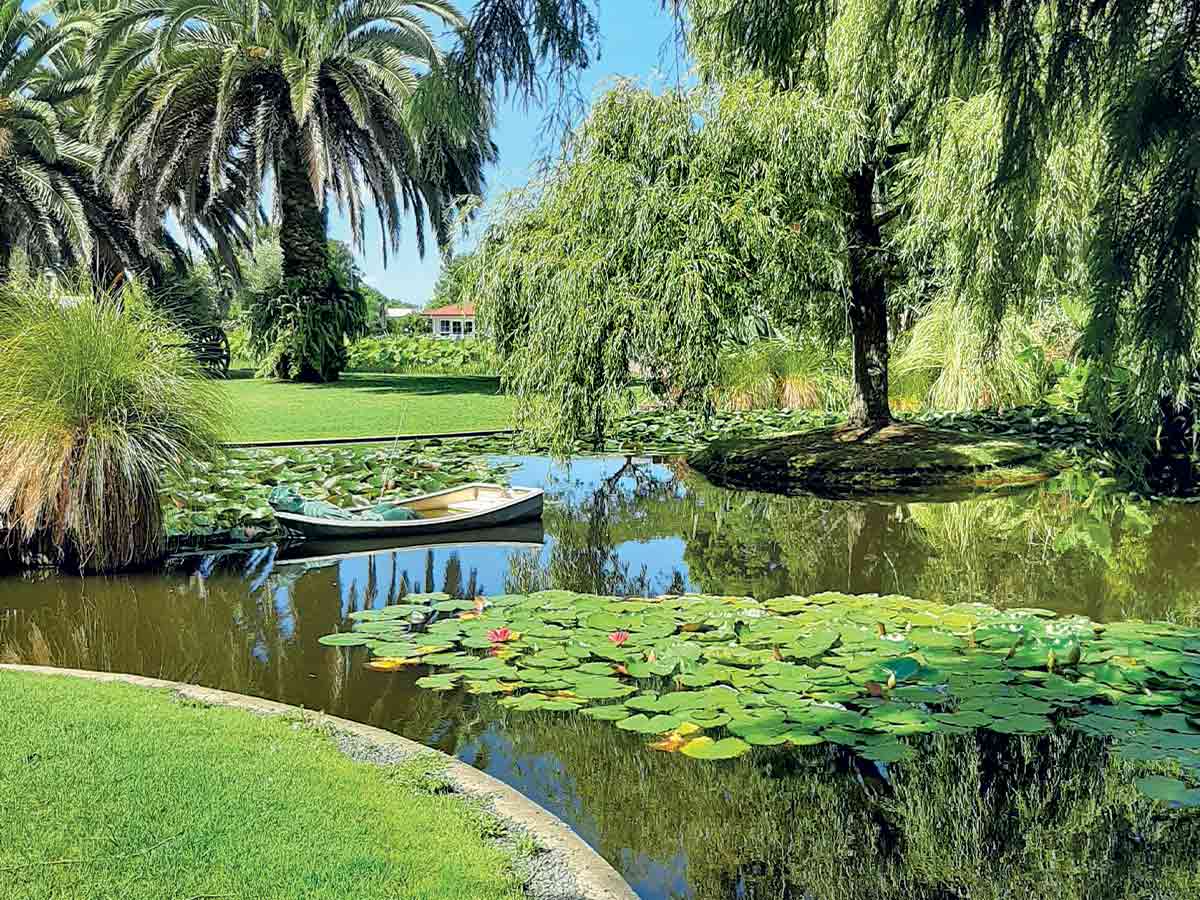
Ngatea Gardens: a water wonderland
- WORDS: HEATHER WHELAN
- PHOTOGRAPHY: HEATHER WHELAN AND SUPPLIED
- PUBLISHED: MAY 30, 2024
Heather Whelan has long had Ngatea on her ‘must-visit’ list. Coromandel Peninsula is a favourite spot to visit but stopping off along the way has been sidelined for her last few trips, until now.
We’d been meaning to stop at Ngatea for some time – the cafés along the main street always look tempting – but usually, we’re heading to, or from, the Coromandel Peninsula and hadn’t considered Ngatea as a destination in its own right.
However, after visiting the Ngatea Water Gardens and exploring the town, we can wholeheartedly recommend it as a stop. There’s even freedom camping right in the town centre at the Hauraki District Council car park.
Weird and wacky water gardens
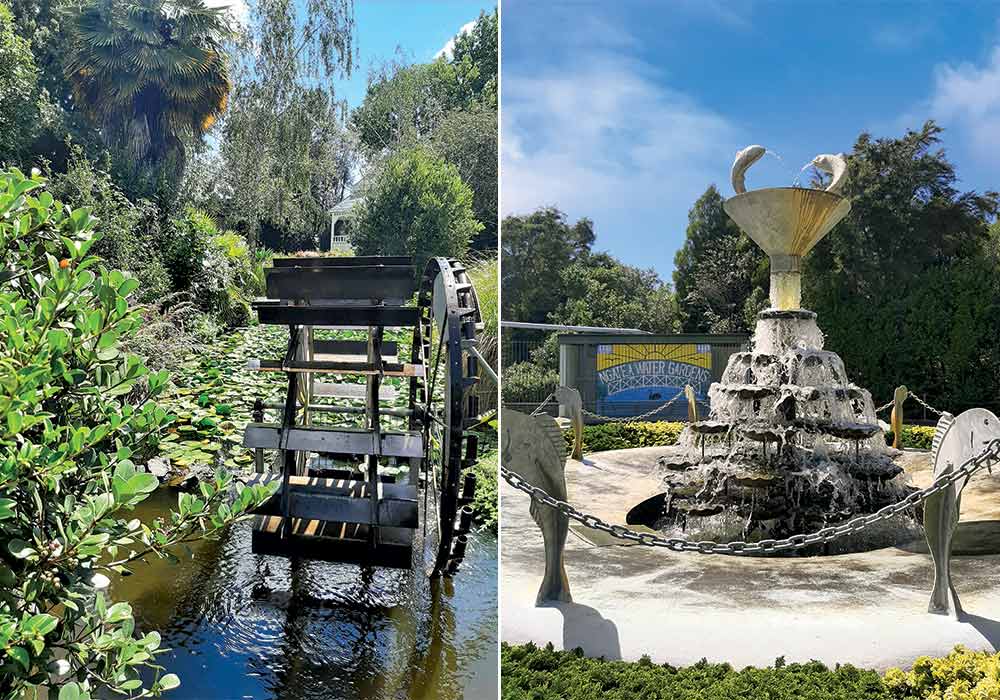
Right: Magical fountains are dotted around the property
The Water Gardens are tucked away behind Ngatea’s main street. As we pulled into the car park, we got the first inkling of what was in store for us. Our space was reserved for ‘wizards, oil refiners, and unemployed miners’. Every other parking space had the same quirky kind of signage. The creators of the gardens, Roger and Emma Blake, obviously have a sense of humour. At every turn throughout the two hectares, there’s something to make you smile.
Paths led us over bridges, past lily ponds, water wheels, and fountains, beside a castle and above a waterfall. Everything was lush and flowers bloomed. Unlike conventional gardens, though, we came across things such as parking meters in a lake. They had the instruction, ‘boat parking only.’ Another sign warned of a ‘fork in path ahead’. Sure enough, there was a garden fork cemented in. ‘Please close the gate’ said the notice on the gate sheltering ‘sheep’. Of course, there was no fence attached to the gate. There were lots more amusing signs, but I won’t spoil things by relating them all – I’m sure you’ll want to visit and discover them for yourself.
A mammoth undertaking
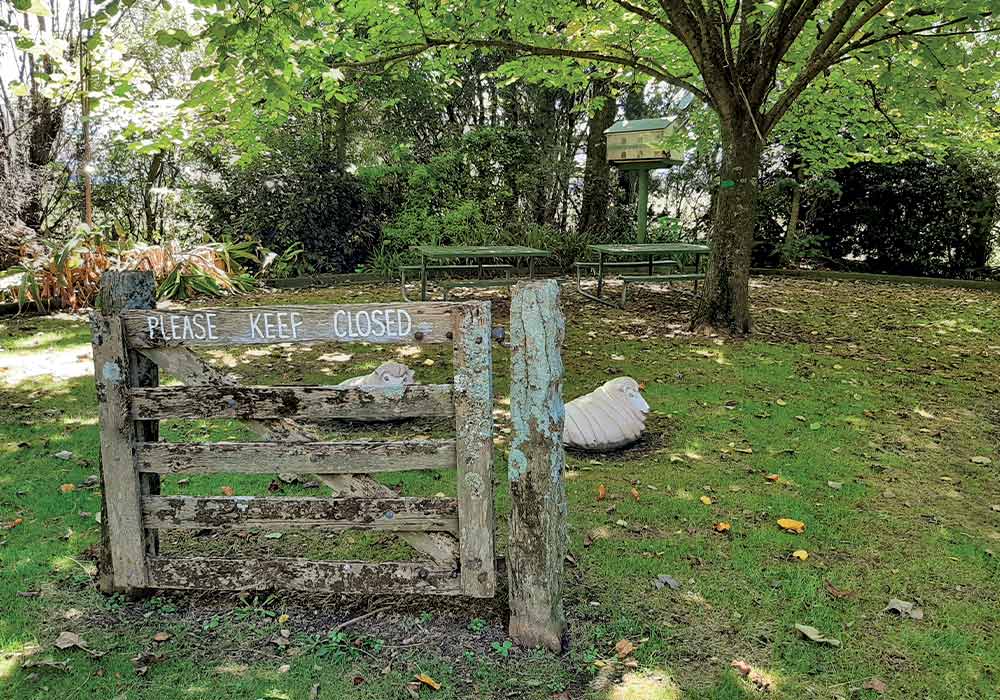
It’s hard to realise that back in 1995 when Roger and Emma started work on the gardens, there was nothing but bare paddocks at the property. They had little gardening experience, but they had a dream – and the drive to create it. Roger borrowed his father’s excavator and dug out 5000 cubic metres of clay to form the four ponds. This clay, together with topsoil, contoured the surrounding areas. Later, tonnes of greywacke rocks were delivered. Roger built the waterfall with 200 tonnes of them, which he set into concrete to form the waterfall. This pumps 100 litres of water per second, which cascades down into one of the ponds.
Underground services were installed (power, irrigation, and lighting) and area by area, the gardens were planted. Roger built the large structures, such as the castle, barn, and bridges, himself, although, the couple had help from family and friends. After all, this huge project was done after work and on weekends. Ngatea Water Gardens opened to the public in 1998, just three years after starting the enterprise.
Now well established, the gardens boast splendid mature trees and shrubs. In the ponds, you’ll see water lilies and lotus, which are home to goldfish, ducks, and black swans. Peacocks parade on the lawns and bees buzz among the mesmerising array of flowering plants. There are also some ancient turtles, believed to be among the oldest in New Zealand.
Arthur’s Canny Museum
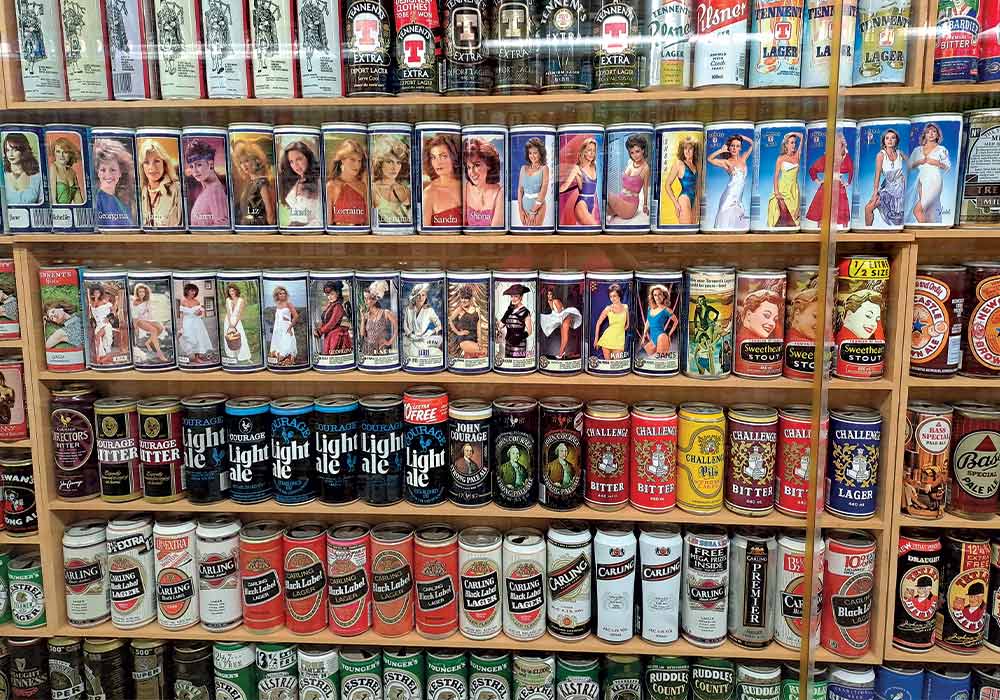
While it looked like a humble garden shed from the exterior, it’s fair to say that stepping inside took us by surprise. Inside were seemingly endless rows of drink cans, much like a kaleidoscope for the eyes. Featuring more than 10,000 different drink cans, this unique museum is New Zealand’s only collection of beverage cans of this scale on display to the public. Information in the museum explained that Roger’s late father, Arthur, picked up a beer can from the roadside one day and so started this collection. It was interesting to peruse the different beer, soft drink, and unusual cans; the oldest was 50 years old and there were many fascinating ones from overseas.
A history of excavation

Right: Lakeside tranquillity
It’s apt that the Blake family constructed water gardens at Ngatea because water and digging are central to Ngatea and the Hauraki Plains area. Early in the 20th Century, people drained the peat swamp, bog, overflowing rivers, and Kahikatea forests so they could farm the land. The first drains and stop banks were hand-dug. There’s a sculpture named Plains Pioneer by Paul Dibble commemorating these drain diggers in Pioneer Park in the town centre. Nowadays, there’s a vast network of canals, drains, floodgates, and pumping stations that keep the land from being inundated.
Early travel in the area was by water, but as roads were built, a bridge was needed at Ngatea. A unique central lift span bridge was constructed in 1917, linking both sides of the Piako River. Until they replaced it in 1960, the bridge served as a landmark in the area. To celebrate the start of the new millennium, a half-scale working replica of the bridge’s central span was constructed in the Tilbury Reserve, beside the river.
In Aunt Daisy’s footsteps
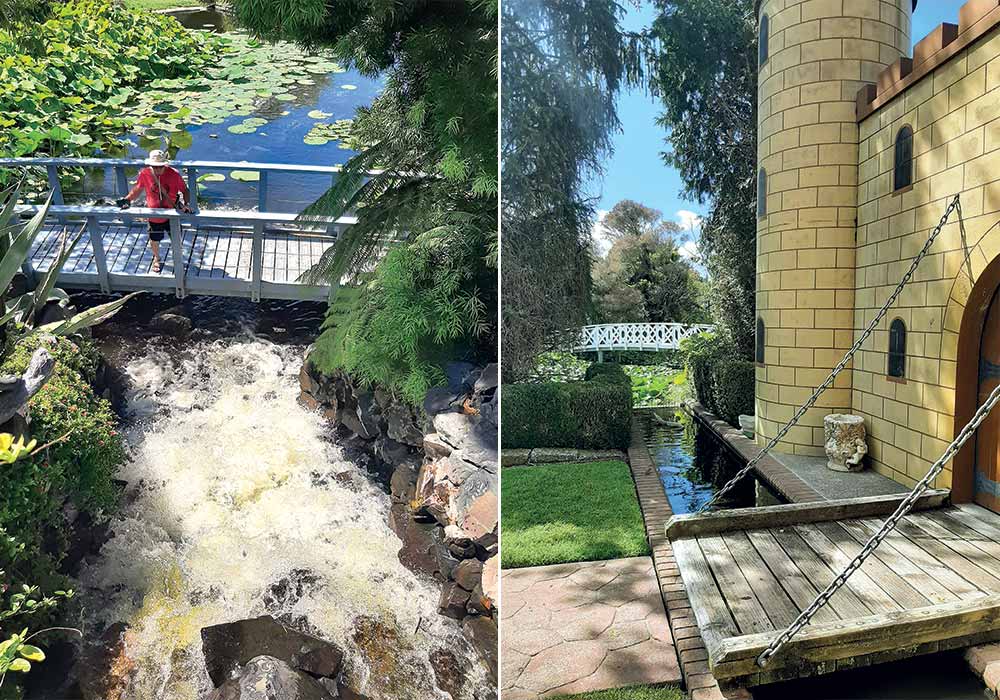
Right: The castle, moat, and drawbridge at the heart of the property
One engineer who worked for the Hauraki Plains Council was Frederick Basham. His wife, Maude, who became better known as Aunt Daisy, began her radio career when they lived in Ngatea. Her popular radio programme made her a star of the domestic. She became a celebrity food writer, with her cookbooks running to several editions – 2010 saw one on its 22nd reprint.
Ngatea has obviously taken heed of its famous cook and baker. I’d spotted half a dozen cafés in the little town. We couldn’t sample them all (this time) but had morning tea at The Glory Company, where the Aunt Daisy tradition continues with great coffee and baking.
Year-round delight
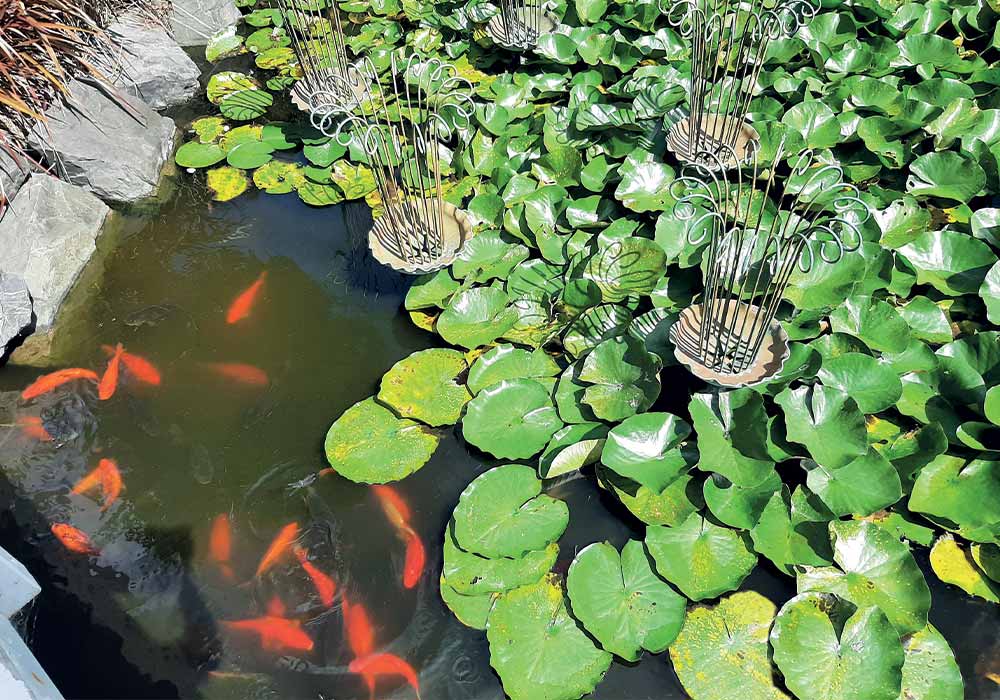
Ngatea Water Gardens has been cleverly planted to offer year-round visual delights, and there’s no doubt that it’s a fun place to meander and explore. Winter hours kick in from 1 May, where the usual Sunday to Thursday opening hours are limited to Sunday only, through until 1 October, so if you’re planning to travel and explore, consider this to avoid disappointment. It’s a wonderful spot to spend time for all ages and there’s a wheelchair-friendly path through the gardens.
Sunday, 16 July 2023
Explore the scenic Whanganui River
Home / Destinations / Manawatu / Whanganui / Explore the scenic Whanganui River
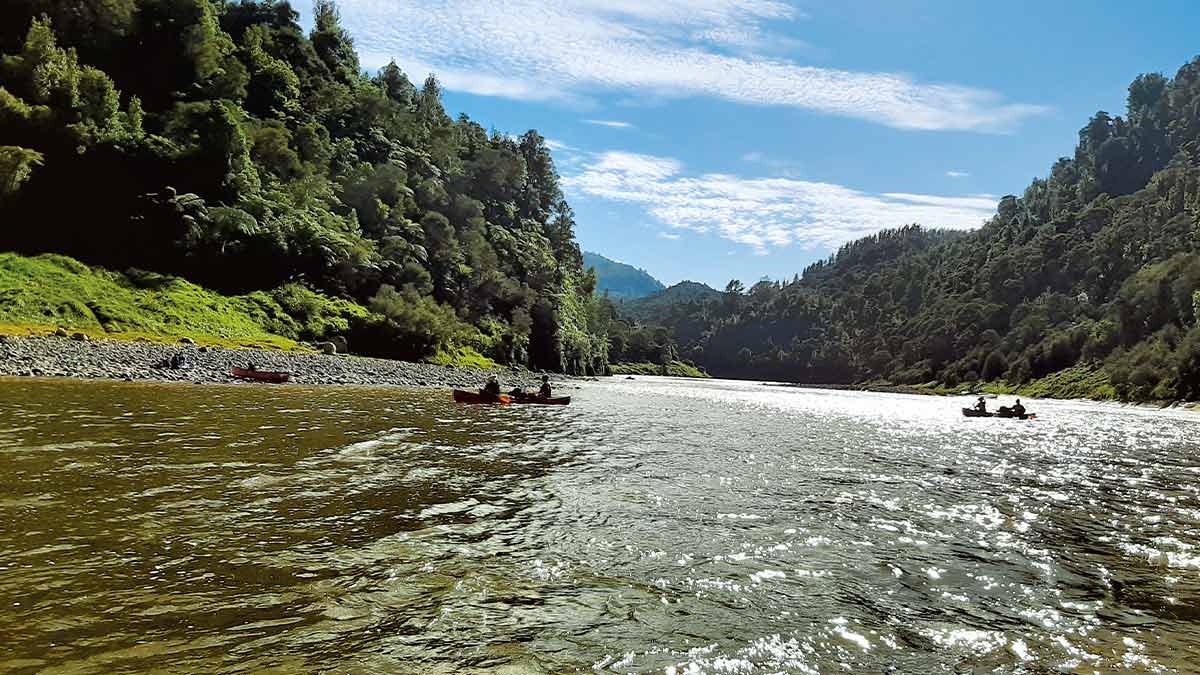
Explore the scenic Whanganui River
- WORDS: HEATHER WHELAN
- PHOTOGRAPHY: HEATHER WHELAN
- PUBLISHED: JULY 13, 2023
Whanganui River is one of three rivers in New Zealand given its own legal identity. As the country’s third-longest river, it has played a vital role in the history and development of New Zealand and remains at the heart of the region. Interestingly despite being New Zealand’s longest navigable river, it has only two bridges between Whanganui and Taumarunui, but that doesn’t mean there’s any shortage of places to explore as Heather Whelan and her partner discovered.
As we travelled by jet boat along quiet bush-lined, fjord-like gorges on the upper reaches of the Whanganui River, it was hard to visualise the hustle and bustle of bygone days, when steamboats plied to and fro between Whanganui and Taumaranui.
From the 1890s, until railways and state highways were built, the river was a main thoroughfare for goods and passengers. In the centuries before that, Māori travelled by waka between mārae and kāinga. We passed some adventurers paddling in canoes and they seemed reminiscent of those times; it was as if the river had returned to the peacefulness of pre-European days.
From the mountains to the sea
Whanganui River is New Zealand’s third longest, stretching 290km from the northern slopes of Mount Tongariro to the river mouth at Whanganui. Its special significance was recognised in 2017 when an act was passed affording the river the same rights as a living person. The Māori proverb is often quoted: The river flows from the mountains to the sea. I am the river and the river is me. When visiting Whanganui recently, we experienced much of the river, its history, and its beauty.
A bridge to nowhere
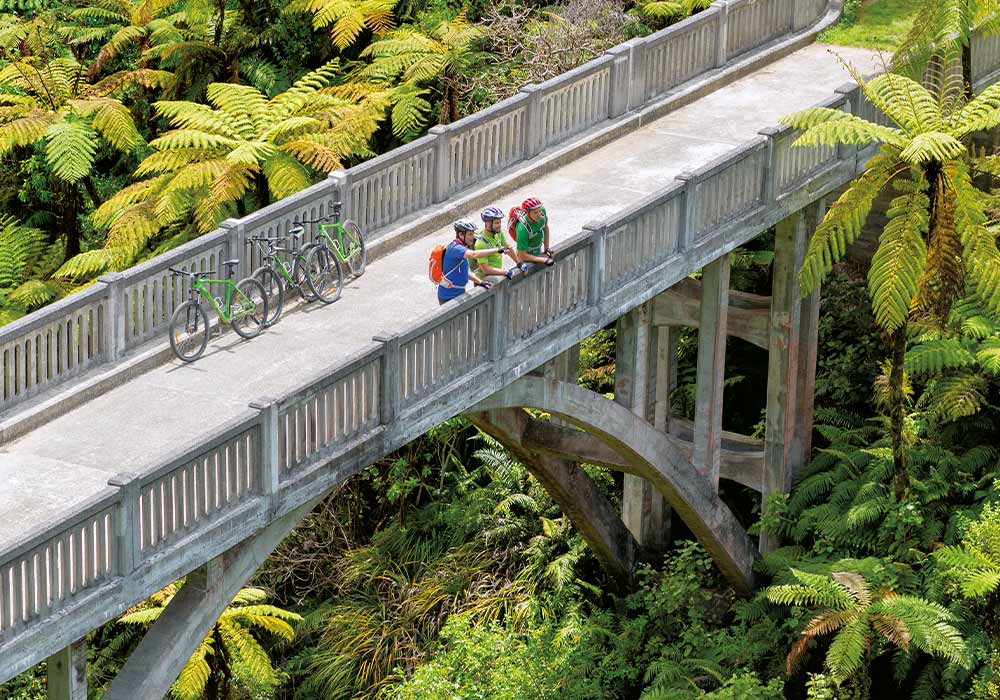
Our trip to the ‘world famous in New Zealand’ bridge began at Pipiriki, 65km up the Whanganui River Road from Whanganui. Here we joined our driver/guide Thomas and the small group of visitors who, like us, were curious to visit the unique spot. We’d booked with Whanganui River Adventures who provide jet boat journeys and canoe trips up the river from their campground base.
We donned life jackets and clambered aboard the boat. It’s 32km from Pipiriki to Mangapurua Landing, about an hour’s journey, punctuated by stops where we learned about points of interest, including places where the movie River Queen was filmed. Thomas is a local and has a wealth of knowledge, dating back to when he first started steering a boat on the river when he was a young boy. At the landing, we disembarked and took the gently undulating track to the Bridge to Nowhere, about a 50-minute walk.
Now in total isolation, the concrete bridge was constructed ready for a road that was never built. Soldiers returning from WWI were offered land in the Mangapurua and Kaiwhakauka valleys and they began to clear the bush. Despite difficulties, the community of 30 farms thrived for a while but by the time the bridge was finished in 1936, most farmers had already left. It became known as ‘the valley of abandoned dreams’ with the last few settlers reluctantly leaving in 1944. The farmland soon reverted to bush.
A paddle steamer excursion
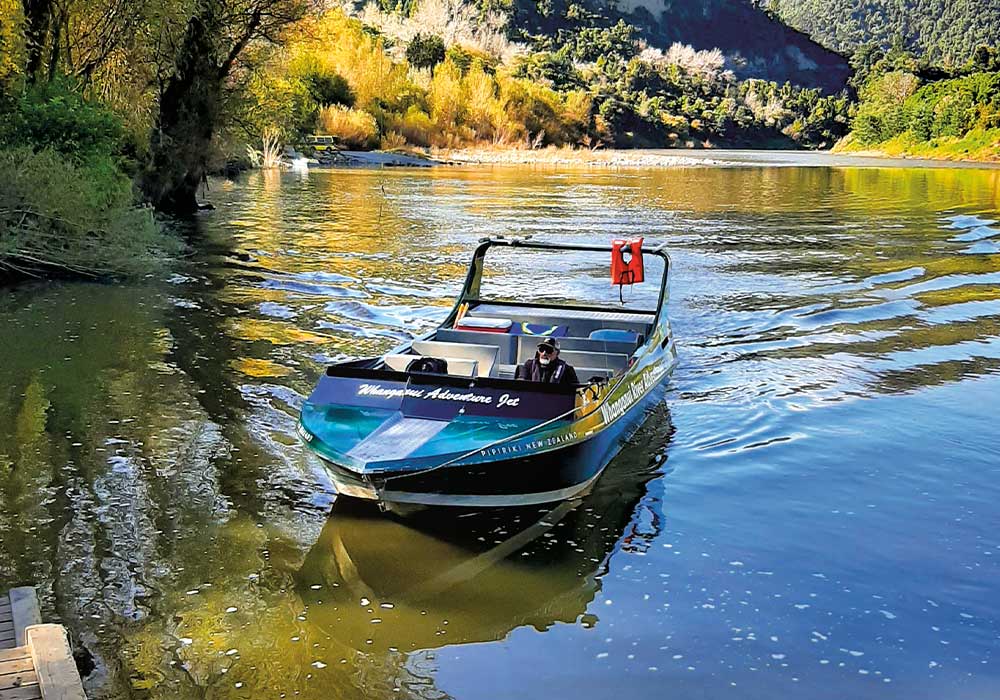
The first regular steamboat service on the Whanganui River began in 1892. Alexander Hatrick had several boats that took passengers to Taumarunui where they could connect by rail and coach for destinations further north. The river also became a tourist destination, known as the ‘Rhine of New Zealand’. The PS Waimarie, one of the original – and now New Zealand’s only remaining coal-fired paddle steamers – has been restored and now operates two-hour voyages from Moutoa Quay in Whanganui.
The whistle sounded, releasing puffs of steam as we boarded the vessel. The crew looked the part in their dark uniforms and sailor’s caps and were happy to explain the workings of the boiler and the paddle wheels. The slow pace as we chugged past parks and bridges, rowing clubs and rural scenery added to the Edwardian ambience. At Upokongaro, where the spire of St Mary’s Church could be seen beyond the riverbank and where cyclists waved from the new bridge, the Waimarie turned, and we cruised back to Whanganui.
Along the waterfront
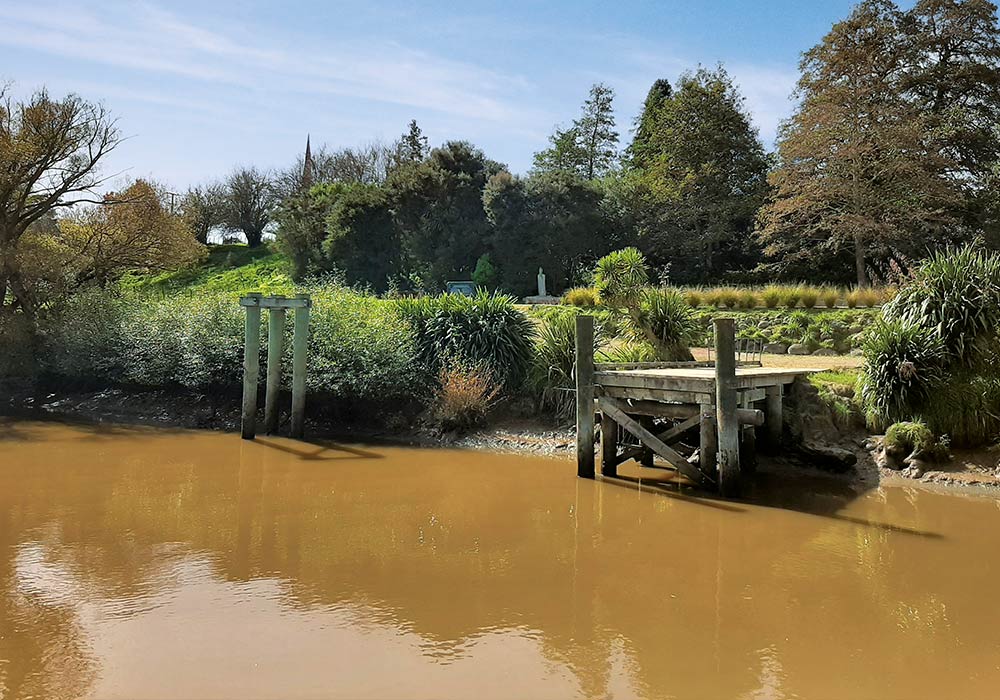
The Waimarie isn’t the only historic vessel moored at Whanganui’s riverbanks: nearby is the restored MV Wairua, also available for trips and cruises. And it’s not just watercraft that have been restored. Nearby we found Mable, a tram that used to run between the city centre and the seaside suburb of Castlecliff. Restored and refurbished, gleaming and polished, Mable was waiting at the quayside when we disembarked from the paddle steamer. Lovingly cared for by volunteers and running on Sundays for short trips, stepping aboard Mable is like stepping back in time. There are old adverts on the walls, polished leather straps to hang onto and, in the driver’s cabin, copper pipes, dials, and handles gleam like a steampunk’s dream.
There’s an impressive network of cycle and walking tracks in Whanganui, and the waterfront is busy with people riding bikes and scooters as well as strolling along the boardwalks and grassy areas. There are sculptures to admire and cafes to enjoy a coffee. On Saturdays, there’s food and crafts for sale at the Whanganui River Markets on Taupo Quay.
On the River Road
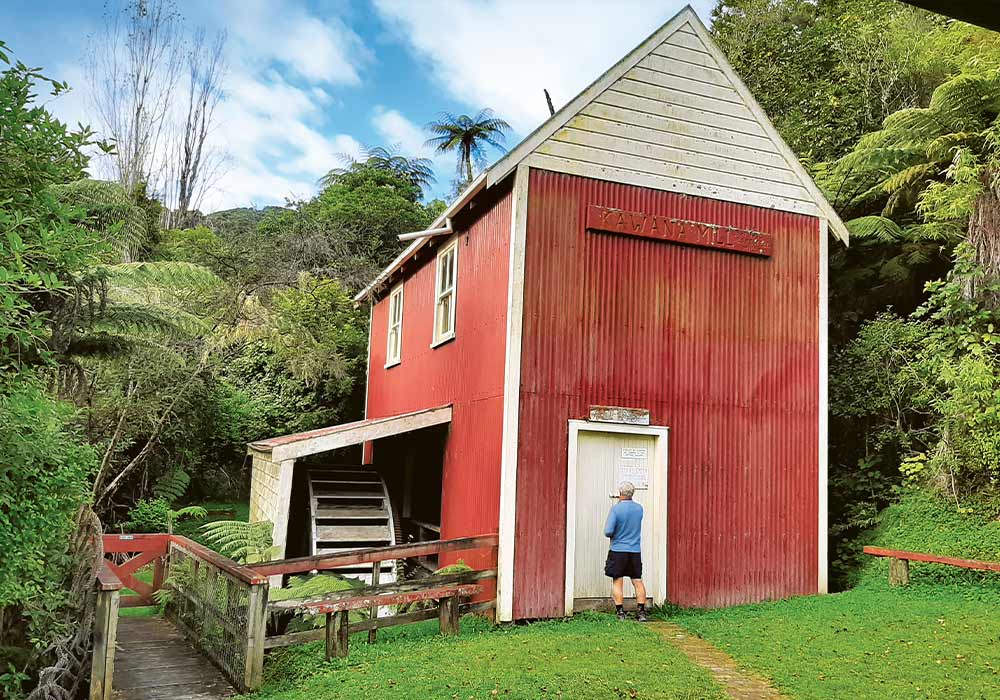
We explored the section of the river between Upokongaro and Pipiriki by car. The Whanganui River Road is off the beaten track and quiet enough to be used as a cycle route. There are small settlements and mārae close to the river and the road winds between them. Their names are evocative: Ātene (Athens), Koriniti (Corinth), Rānana (London), and Hiruhārama (Jerusalem) – villages renamed by missionary Richard Taylor in the 1850s.
Jerusalem is interesting because of the Catholic Mission founded in 1892 by Suzanne Aubert (Mother Mary Joseph). The convent and church can be visited, and we stopped to look around. St Joseph’s is more than a century old and features Māori carving and kowhaiwhai panels. There’s an interesting painting of a Māori Madonna and child on the wall. The settlement is also well known as the place where the poet James K. Baxter lived, had his commune, and is buried.
Kawana Flour Mill, further down the road, was built in 1854. It’s the last remaining mill on the Whanganui River and the only example of 1850s mill machinery in the country. It’s been rebuilt and restored, as has the miller’s cottage next door.
Thursday, 4 May 2023
Blooming Northland
This is my latest article in Motorhomes Caravans & Destinations Magazine
Blooming Northland
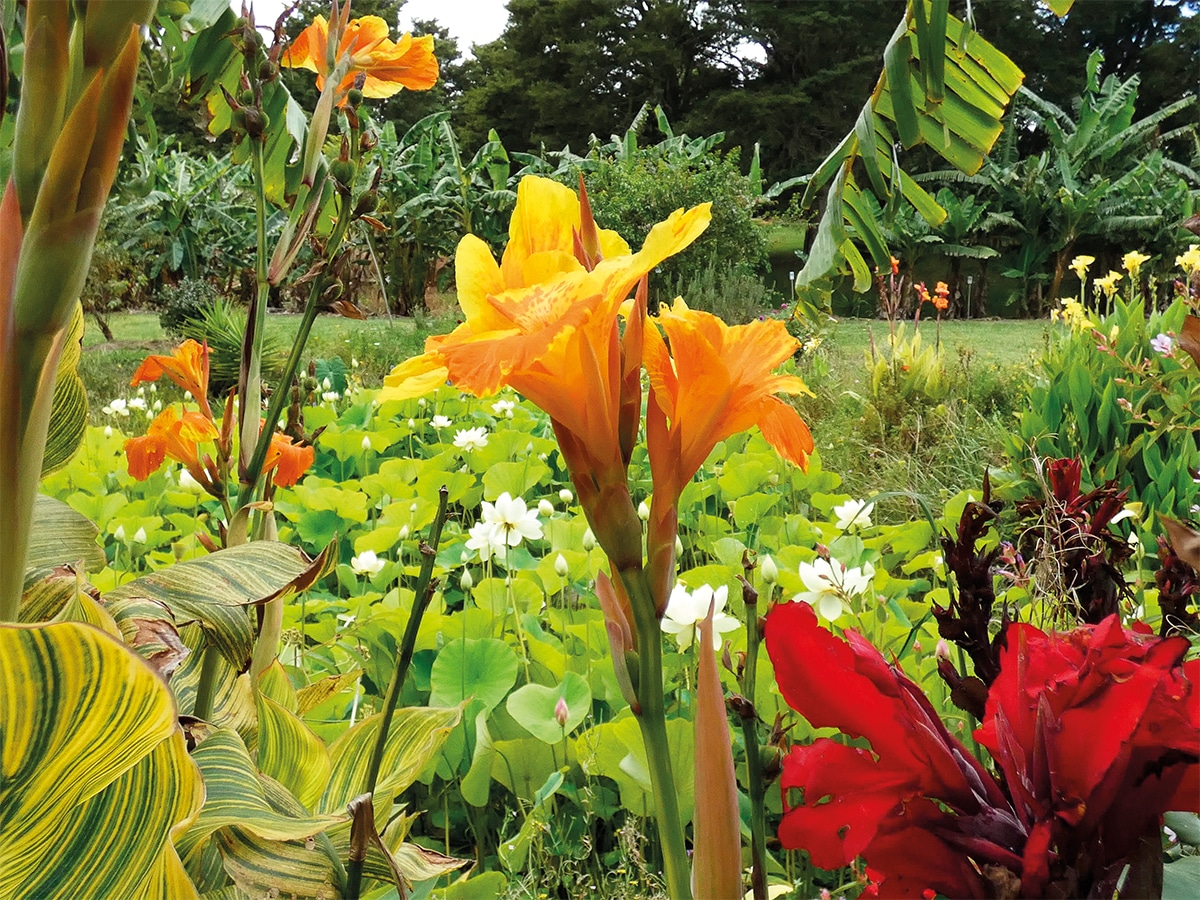
Blooming Northland
- WORDS: HEATHER WHELAN
- PHOTOGRAPHY: HEATHER WHELAN
- PUBLISHED: APRIL 26, 2023
Northland is a wonderful destination at every time of year, but if you plan it right, you’ll find some incredible natural flowering treasures, says Heather Whelan.
The ‘winterless north’ is always popular in the cooler months for those seeking a bit of warmth, but it’s also the perfect environment for some natural floral delights. In true Kiwi style, many of these places are family-run, and they are a peaceful and colourful way of whiling away a day.
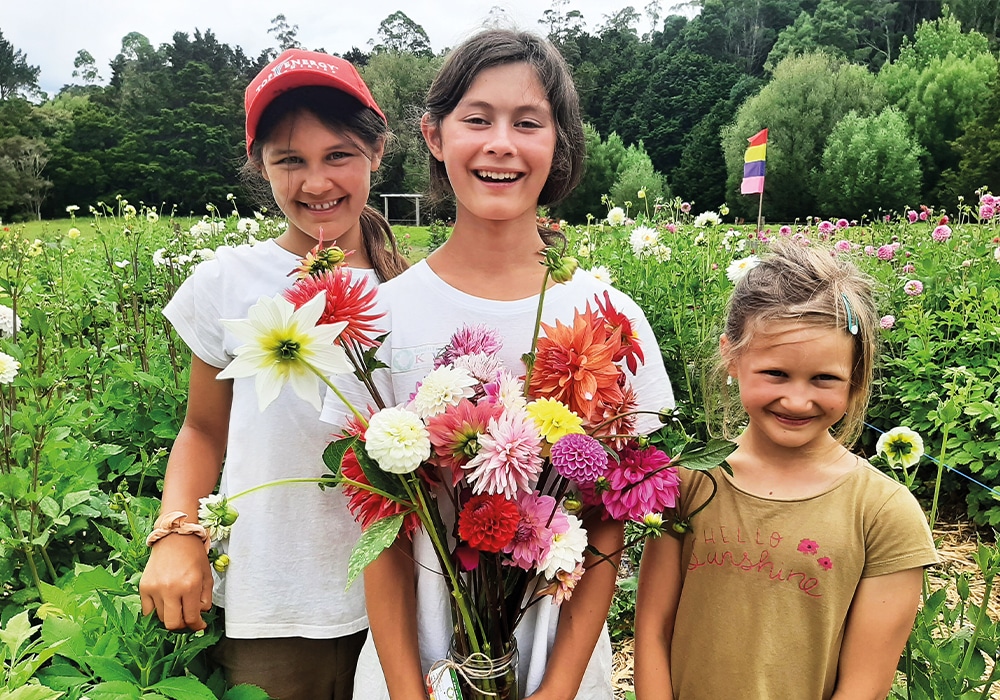
Darlings with Dahlias
The Dahlia Kids, Milly, Gracie-Mae and Lexi, think it’s great that people want to come and visit Green Footed Kiwi, their dahlia farm. They love that their visitors leave with smiles on their faces. And who could fail to be both charmed by the dahlia’s profusion of colour and delighted by the tours given by the girls?
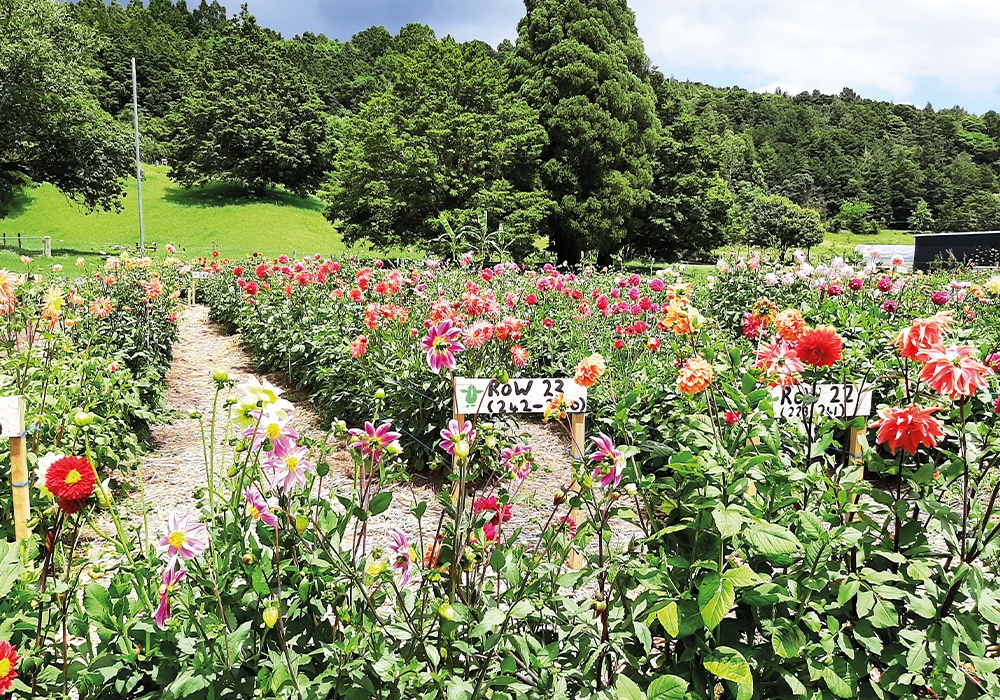
The Green Footed Kiwi began three years ago as a homeschooling project, when the now ten-year-old Gracie-Mae bought ten potted cuttings. It has blossomed, in all senses of the word, into a beautiful pick-your-own business with over 800m of dahlia beds and 3000 dahlia plants. The girls aim to provide a friendly, hands-on experience and it certainly is. All three may be young but they know everything you’d want to learn about the flowers – from what length to cut them, to pollination by bees and how to grow new varieties from the seeds they collect.
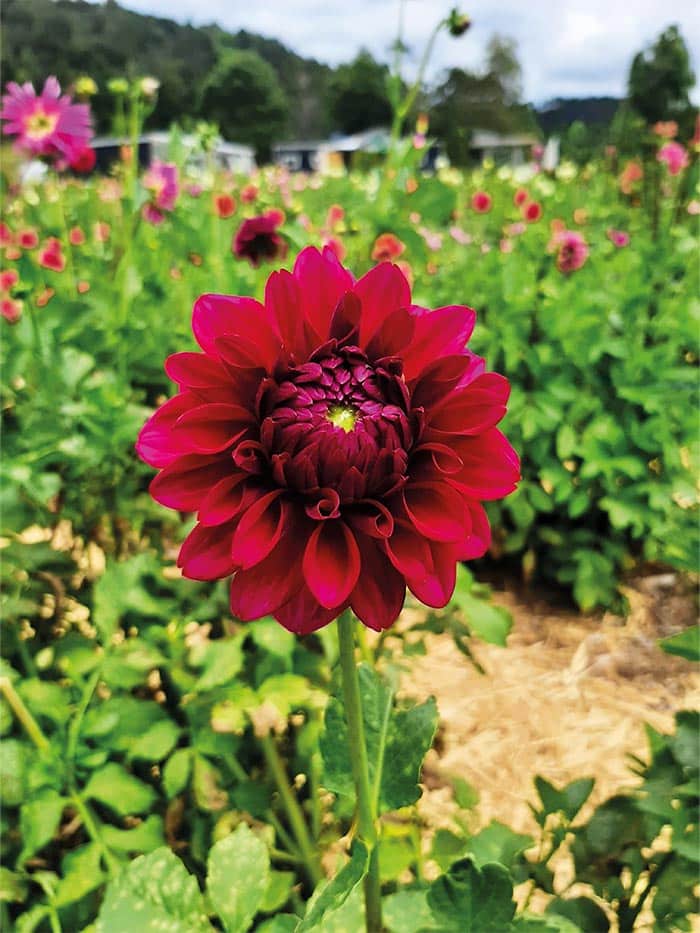
Open on weekends from 10am to 4pm, the business includes high tea, made and served by the girls. Available on Saturdays and Sundays (bookings are essential for high teas) visitors can indulge in delicious delights, surrounded by beautiful flowers of every hue and variety. There’s also the option for tea, coffee and cake and, of course, jars or buckets to fill with flowers, and packets of seeds to take home.
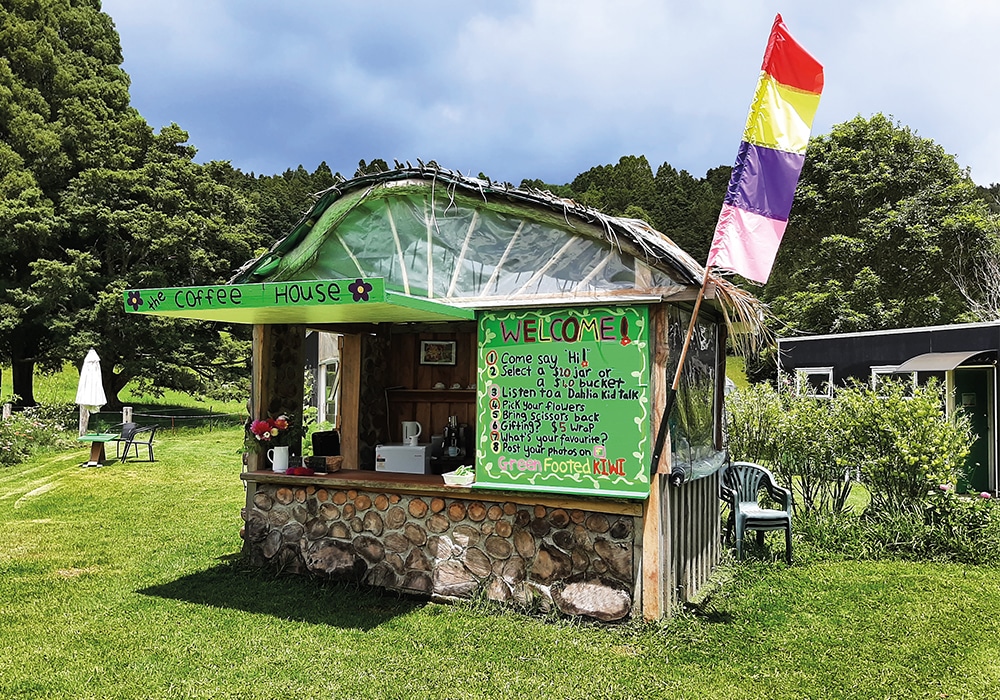
I couldn’t resist starting with coffee and cake (beautifully presented with flowers) as I relaxed and drank in the view. The dahlia garden is nestled in a valley surrounded by native bush and a sense of peacefulness pervades, broken only by the buzzing of bees and the occasional neigh from the family’s three horses.
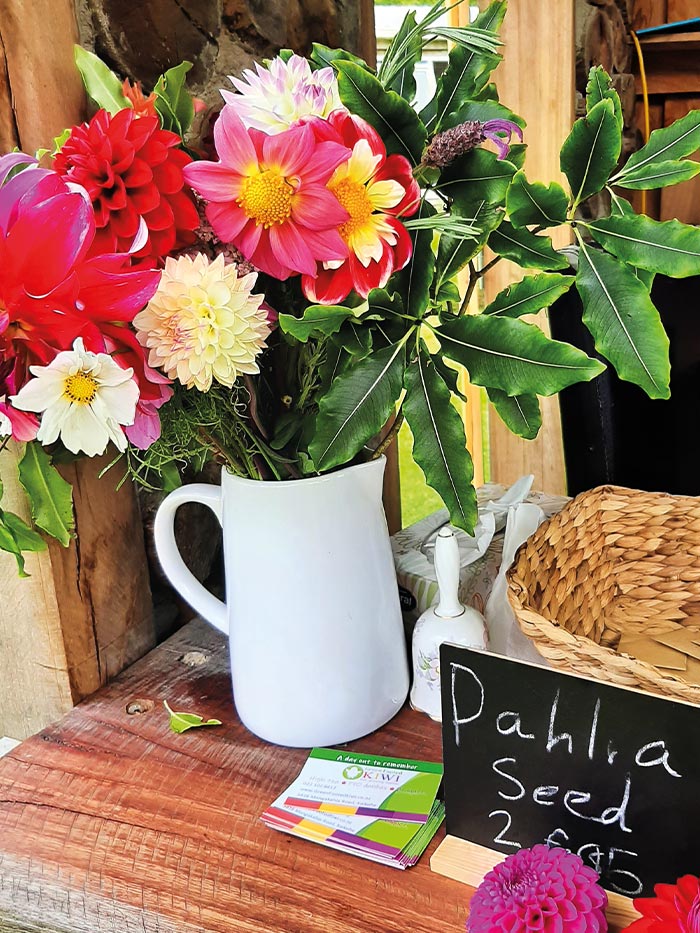
Seven-year-old Lexi helped me fill a jar with the prettiest flowers we could find. The girls say they don’t have favourites but they’ll appreciate the vibrant colour of one and the shape of another. I learned to differentiate pom poms from dinner plates and cactus from water lilies as I moved from row to row. The girls have hand painted the signs marking each section and it’s obvious that their input into the experience has been huge. They are justifiably proud of their achievements.
It isn’t all hard work though. Lexi loves her home environment and making new friends. Creating pictures with fallen petals is fun too. Millie has been inspired to draw the flowers (and is hoping to have some art to sell one day) while Gracie-Mae loves taking photos of the blooms, as do the visitors. Gracie’s next goal is to make a photo book of all the flowers they’ve grown from seed.
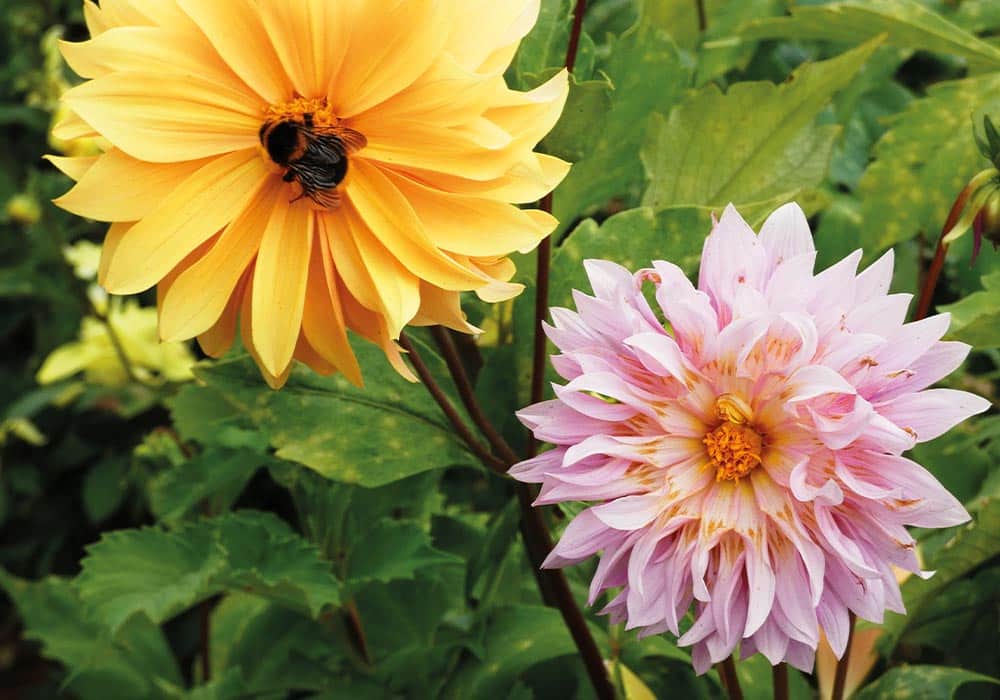
Along a country road
The Green Footed Kiwi is close to Kaikohe on State Highway 15. This road is a quiet alternative to SH1 and is quintessentially Northland, passing through farmland as well as native bush; I spotted a church tucked in against trees, and went past marae and village schools as I headed south. If you want a break there’s a café/bar at the Old Parakao Store, a gastro-pub at Poroti and a store at Titoki.
At Maungatapere there’s a café and petrol station (look out for the dragon!). Part way along the road you come to Twin Bridges, where the Awarua and Mangakahia Rivers meet. A turn at the point between the two bridges leads to a rest area with parking and green space – a good place to stretch your legs and admire the scenery. It’s also a freedom camping spot.
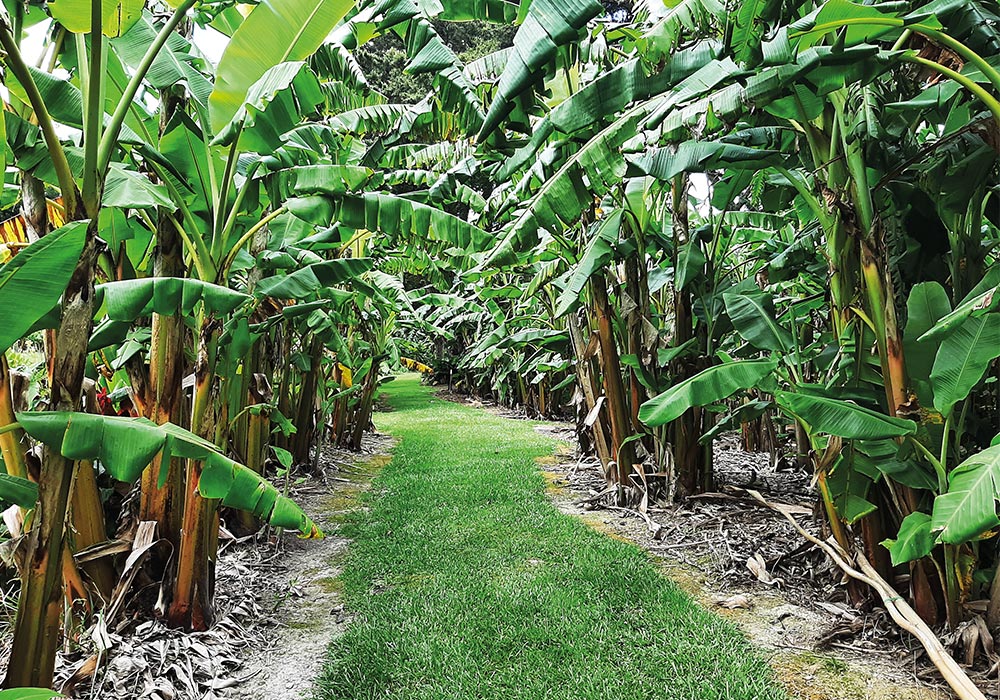
A sub-tropical oasis
Just before the road arrives at Maungatapere there’s a turn into another tranquil place to relax and enjoy nature. This is Land of the Lotus, an idyllic 24ha block where Hugh and Pauline Rose have established water gardens, banana and pineapple plantations and much more. Hugh is chairman of the Tropical Fruit Growers of New Zealand and is a font of knowledge that he’s happy to share with visitors.
Land of the Lotus is home to the largest collection of banana varieties in the country. It’s not hard to imagine you’re walking through a plantation on a tropical island or somewhere in Asia as Hugh leads the way past 1000 banana palms with names such as Dwarf Ladyfinger, Misi Luki, Black Beauty and Goldfinger. Bananas will grow further south, though they may have to be grown in greenhouses–the subtropical north is their natural home.
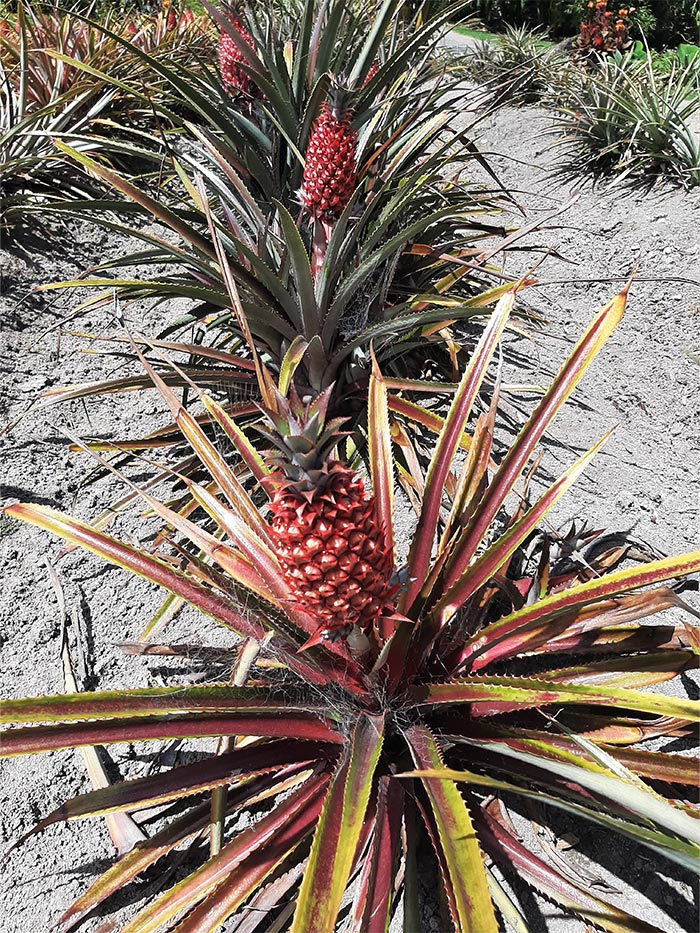
An exotic collection
As I explored further I saw sugar cane, water chestnuts, papaya, ginger, coffee and pawpaw thriving on the property. There are rows of sweet and juicy pineapples that are so soft you can eat the core too. They grow three varieties: red, cayenne and queen. These can be bought bare rooted or in pots – Hugh and Pauline can supply recipes too. Northland’s climate, together with rich volcanic soil, provides the perfect environment for growing this array of tropical plants.
Of course, the lotuses are very special. They raise their stems, blossoms and leaves clear of the water in eight ponds in the water gardens and also in the collection of tubs where the stunning pink and white flowers are grown for sale. Hugh and Pauline hold workshops on growing lotus if you are keen to try it yourself.
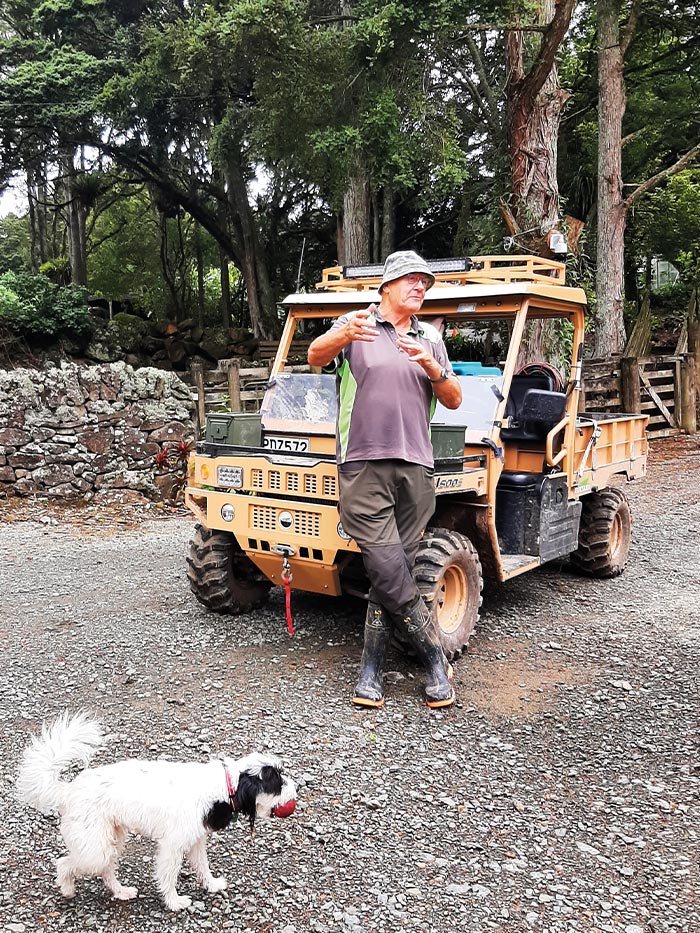
Walking in nature
There is a network of tracks and paths to follow at Land of the Lotus. The Roses are well aware of the benefits of being in nature and enjoying what the Japanese call ‘forest bathing’ – it’s not about getting wet, but just spending time in nature.
I wandered to the edge of the ten-acre lake and spent some time beside a boathouse, just enjoying the tranquillity. This lake is too deep for lotus but is full of water lilies. There are two tracks around the lake. Land of the Lotus isn’t advertised as a POP, but Hugh says there are spaces for people to park up by arrangement. Some have stayed and helped work on the property. If you do stay, Hugh will mow a part of the meadow beside a stream for you. What could be more idyllic?
Further info:
• More information about The Green Footed Kiwi and Land of the Lotus can be found on their websites: greenfootedkiwi.co.nz and landofthelotus.nz. Both places are on Facebook too.
• For members of the NZMCA there are POPs on or near SH15, including at the Poroti Tavern, which has a good reputation for its food. In Kaikohe there’s freedom camping at Lindvart Park and some POPs, including one at the Kaikohe A&P Showgrounds.
